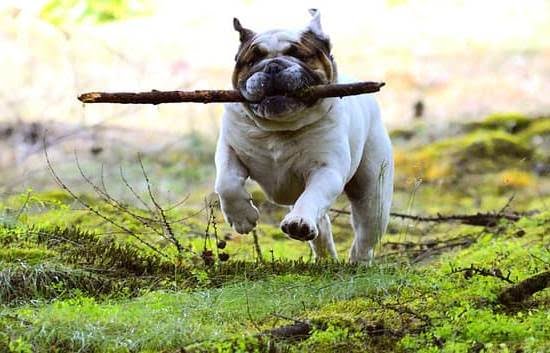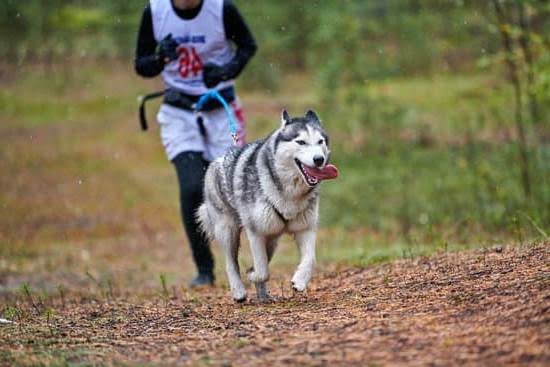Have you ever wondered how to train a dog to not chase? Understanding the instinct to chase is a crucial first step in effectively training your furry friend.
Dogs have a natural inclination to chase after objects, animals, or people, and it’s essential to explore the reasons behind this behavior in order to address and modify it. In this article, we will delve into the underlying motivations of dogs’ chasing instincts and provide valuable insights into positive reinforcement training methods and strategies for establishing clear boundaries and rules for your dog to follow.
One of the most effective ways to train a dog not to chase is through positive reinforcement techniques. By rewarding desired behaviors and using gentle but firm guidance, dogs can learn new habits and responses. We will discuss the benefits of positive reinforcement training, as well as provide examples of effective training methods that have been proven successful in modifying chasing behaviors in dogs.
In addition, we will also explore the concept of establishing boundaries and rules for your dog, including the use of commands such as “leave it” and “stay.” Clear communication and consistent enforcement of these rules are essential in shaping your dog’s behavior and reducing their instinct to chase after stimuli. Stay tuned as we take you through practical tips for implementing leash and recall training, utilizing distractions and redirection, environmental management, consistency, patience, and seeking professional guidance if needed.
Positive Reinforcement Training
One of the key benefits of using positive reinforcement techniques is that they can help to build your dog’s confidence and self-control. When a dog successfully refrains from chasing and receives praise or treats as a result, it reinforces their ability to make the right choice in difficult situations. Over time, this can lead to a more obedient and well-behaved pet who is less likely to engage in chasing behaviors.
There are several effective training methods that utilize positive reinforcement to teach dogs not to chase. For example, using command words such as “leave it” or “stay” can help signal to your dog that they should refrain from pursuing something. When they respond appropriately, be sure to reward them with treats or verbal praise.
Additionally, practicing recall training in distracting environments can also be beneficial for preventing chasing behavior. By teaching your dog to come when called even in the presence of tempting distractions, you are reinforcing their ability to listen and obey commands.
| Benefits of Positive Reinforcement Training | Effective Training Methods |
|---|---|
| Builds confidence and self-control | Use of command words like “leave it” and “stay” |
| Strengthens bond between owner and dog | Recall training in distracting environments |
Establishing Boundaries and Rules
When it comes to training a dog not to chase, one of the most important aspects is establishing clear boundaries and rules for your furry friend to follow. Dogs thrive on structure and guidance, so setting these parameters is crucial in preventing them from engaging in unwanted behaviors.
One effective way to do this is by teaching your dog the “leave it” command. This command will help you control your dog’s impulses and prevent them from chasing after squirrels, cars, or other animals while out on a walk.
Another essential rule to instill in your dog is the “stay” command. Teaching your dog to stay when instructed can prevent them from running off after something that catches their attention. This command is especially useful when faced with distractions or potentially dangerous situations. With consistent practice and positive reinforcement, dogs can learn to follow these commands reliably.
In addition to teaching specific commands, it’s important to establish general rules for behavior both indoors and outdoors. For example, if you don’t want your dog to chase after people entering your home, you’ll need to communicate that boundary clearly and consistently. By providing clear guidelines for your dog’s behavior, you can effectively train them not to chase after objects, animals, or people.
| Importance | Benefits |
|---|---|
| Setting boundaries and rules for a dog | Preventing unwanted behaviors |
| The “leave it” command | Control over impulses |
| The “stay” command | Prevention of running off |
Implementing Leash and Recall Training
Leash Training
Start by introducing your dog to the concept of walking on a leash in a controlled environment, such as your backyard or a quiet park. Use positive reinforcement, such as treats and praise, to reward your dog for walking calmly beside you without pulling or lunging. Gradually increase the level of distraction during walks, and continue rewarding good behavior.
Recall Training
Teaching your dog to come when called is essential for their safety, especially if they are prone to chasing after things. Begin by practicing recall in a familiar and safe environment, using high-value rewards like their favorite treats or toys. Gradually introduce distractions during recall training sessions, reinforcing the command with positive reinforcement each time they respond correctly.
Managing Distractions
When implementing leash and recall training, it’s important to manage distractions effectively. This can include avoiding areas where your dog may be more likely to chase, such as busy streets or areas with lots of wildlife. Utilize toys or treats as distractions during training sessions to redirect your dog’s focus away from potential triggers for chasing.
By consistently practicing these training techniques and being patient with your dog’s progress, you can effectively teach them not to chase after objects, animals, or people while on a leash. Remember that every dog learns at their own pace, so be consistent and patient in the training process.
If you’re struggling with leash and recall training, consider seeking professional guidance from a certified dog trainer or behaviorist who can provide personalized assistance based on your dog’s specific needs.
Utilizing Distractions and Redirection
When training a dog not to chase, utilizing distractions and redirection can be an effective and positive way to redirect their attention away from the behavior. It is important to understand that dogs are naturally curious and easily distracted animals, so using toys, treats, and other distractions can help shift their focus away from chasing after objects or animals.
Using Toys as Distractions
Toys can be a great tool for redirecting a dog’s attention when they are tempted to chase. By carrying a favorite toy during walks or playtime, you can use it to redirect your dog’s focus whenever they start showing signs of wanting to chase.
For example, if your dog becomes fixated on another animal or moving object, quickly introduce the toy and engage them in a game of fetch or tug-of-war to distract them from the trigger.
Utilizing Treats for Redirection
Treats are another effective way to redirect a dog’s attention away from chasing by using positive reinforcement. When you notice your dog exhibiting self-control and resisting the urge to chase, reward them with a high-value treat. Over time, they will learn that ignoring the temptation to chase is more rewarding than giving in to their instinct.
Creating Environmental Distractions
In addition to toys and treats, creating environmental distractions can also help steer your dog’s attention away from potential triggers for chasing. For example, if you spot a squirrel in the distance while on a walk, you can quickly redirect your dog’s focus by encouraging them to perform tricks or commands for treats instead of allowing them to fixate on the squirrel.
By consistently utilizing distractions and redirection techniques, you can effectively train your dog not to chase and reinforce positive behaviors that align with your desired training goals. Remember that patience and consistency are key when implementing these methods, as it may take time for your dog to learn how to resist the urge to chase.
Environmental Management
When it comes to training a dog not to chase, environmental management plays a crucial role in minimizing triggers and temptations for your furry friend. By creating a safe and controlled environment, you can help set your dog up for success in learning to resist the urge to chase after objects, animals, or people.
To effectively manage your dog’s environment, consider implementing the following strategies:
- Using barriers: Utilize physical barriers such as fences and gates to prevent your dog from having access to areas where they may be tempted to chase. This can include keeping them away from busy streets or areas with wildlife.
- Creating indoor boundaries: Establish specific areas within your home where you can train your dog to avoid chasing. Use baby gates or closed doors to restrict access to certain rooms or spaces.
- Removing temptations: Identify potential triggers for your dog’s chasing behavior and remove them from their environment whenever possible. This could involve picking up toys that may prompt chasing or keeping them on a leash during walks in high-distraction settings.
By proactively managing your dog’s surroundings, you can help reduce their opportunities to engage in chasing behaviors, making it easier for them to learn and follow the training techniques you implement.
Consistency is key when it comes to environmental management for training purposes. It’s important to maintain these boundaries and restrictions over time while also providing positive reinforcement for good behavior. With patience and dedication, you can create an environment that supports your efforts in training your dog not to chase.
Remember that every dog is unique, so if you’re struggling with environmental management and seeing little progress in deterring chasing behavior, don’t hesitate to seek professional guidance from a certified dog trainer or behaviorist who can provide tailored advice and support.
Consistency and Patience
Training a dog to not chase can be a challenging process, but with consistency and patience, it is achievable. Consistency is key when it comes to training any behavior in dogs, including the instinct to chase. It is important for all family members and anyone involved in the dog’s care to be on the same page and follow the same set of rules and commands. This will help prevent confusion for the dog and reinforce the desired behavior.
In addition to consistency, patience is essential when training a dog not to chase. It is crucial to remember that changing a natural instinct takes time and effort. Dogs may not learn new behaviors overnight, so it is important for owners to remain patient and persistent throughout the training process. It is also important not to become frustrated or lose your temper during training sessions, as this can have a negative impact on your dog’s ability to learn.
To ensure that consistency and patience are maintained throughout the training process, here are some practical tips:
- Establish clear rules and boundaries from the beginning
- Use positive reinforcement techniques consistently
- Practice regular training sessions with your dog
- Be patient and understanding of your dog’s learning process
- Seek professional guidance if needed
By being consistent with commands, reward systems, and rules, you can effectively communicate what behaviors are acceptable while providing regular practice opportunities for reinforcement. With patience and perseverance, even the most determined chaser can learn to resist their instincts in favor of more desirable behaviors. Remember that every dog learns at their own pace, so it’s important not to rush the process or become discouraged. With time, effort, and dedication, you can train your dog to not chase.
Seeking Professional Guidance
In conclusion, training a dog not to chase can be a challenging but necessary endeavor for pet owners. Understanding the instinct to chase and utilizing positive reinforcement techniques are essential steps in this training process. Establishing clear boundaries, implementing leash and recall training, utilizing distractions and redirection, and managing the dog’s environment are all important components in effectively teaching a dog not to chase.
Consistency and patience are key elements in successfully training a dog not to chase. It is crucial for pet owners to regularly practice and reinforce desired behaviors while being patient with their furry companions. Seeking professional guidance from a certified dog trainer or behaviorist is also highly recommended for those struggling with this aspect of their pet’s behavior. Professional trainers have the knowledge and expertise necessary to address specific challenges and develop personalized training plans for individual dogs.
Ultimately, with dedication, consistency, and possibly professional assistance, pet owners can effectively train their dogs not to chase. By understanding their natural instincts, employing positive reinforcement techniques, setting clear boundaries, practicing leash and recall training, utilizing distractions and redirection, managing their environment, remaining patient and consistent, and seeking professional guidance when needed, pet owners can create a safe and enjoyable experience for both themselves and their beloved canine companions.
Frequently Asked Questions
How Do I Train My Dog to Stop Chasing People?
Training your dog to stop chasing people requires consistent and positive reinforcement. Start by teaching them basic commands like “sit” and “stay” to establish control. Use a leash in public spaces and practice redirection with treats or toys.
How Do You Not Let a Dog Chase You?
If you encounter a dog that is chasing you, it’s important to remain calm and avoid running or making sudden movements. Try to stand still and avoid direct eye contact with the dog. If possible, give the dog an object to focus on instead.
How Do You Train a Dog Not to Chase Deer?
To train a dog not to chase deer, it’s essential to work on their recall command in a controlled environment before exposing them to deer. Use positive reinforcement techniques such as treats and praise when they respond to your command, gradually working up to off-leash training in areas with deer presence.

Welcome to the blog! I am a professional dog trainer and have been working with dogs for many years. In this blog, I will be discussing various topics related to dog training, including tips, tricks, and advice. I hope you find this information helpful and informative. Thanks for reading!





